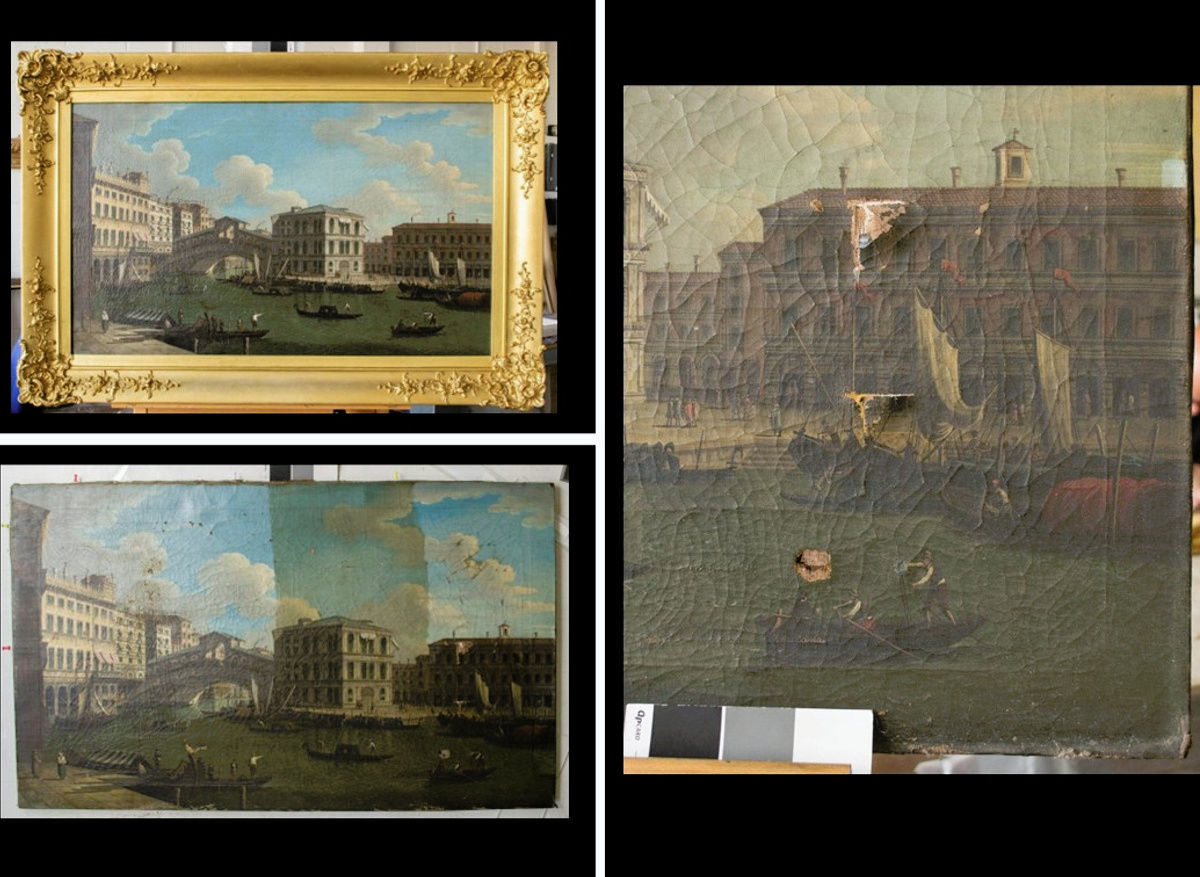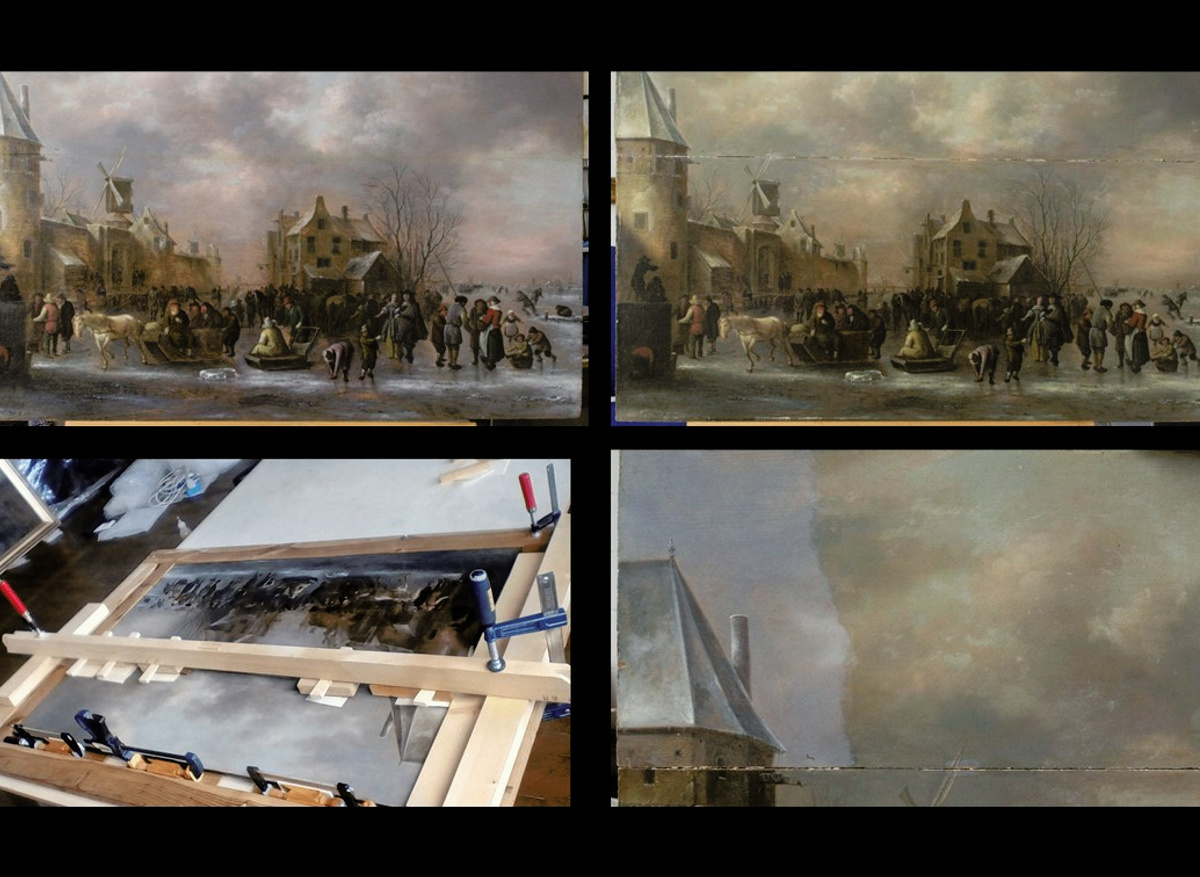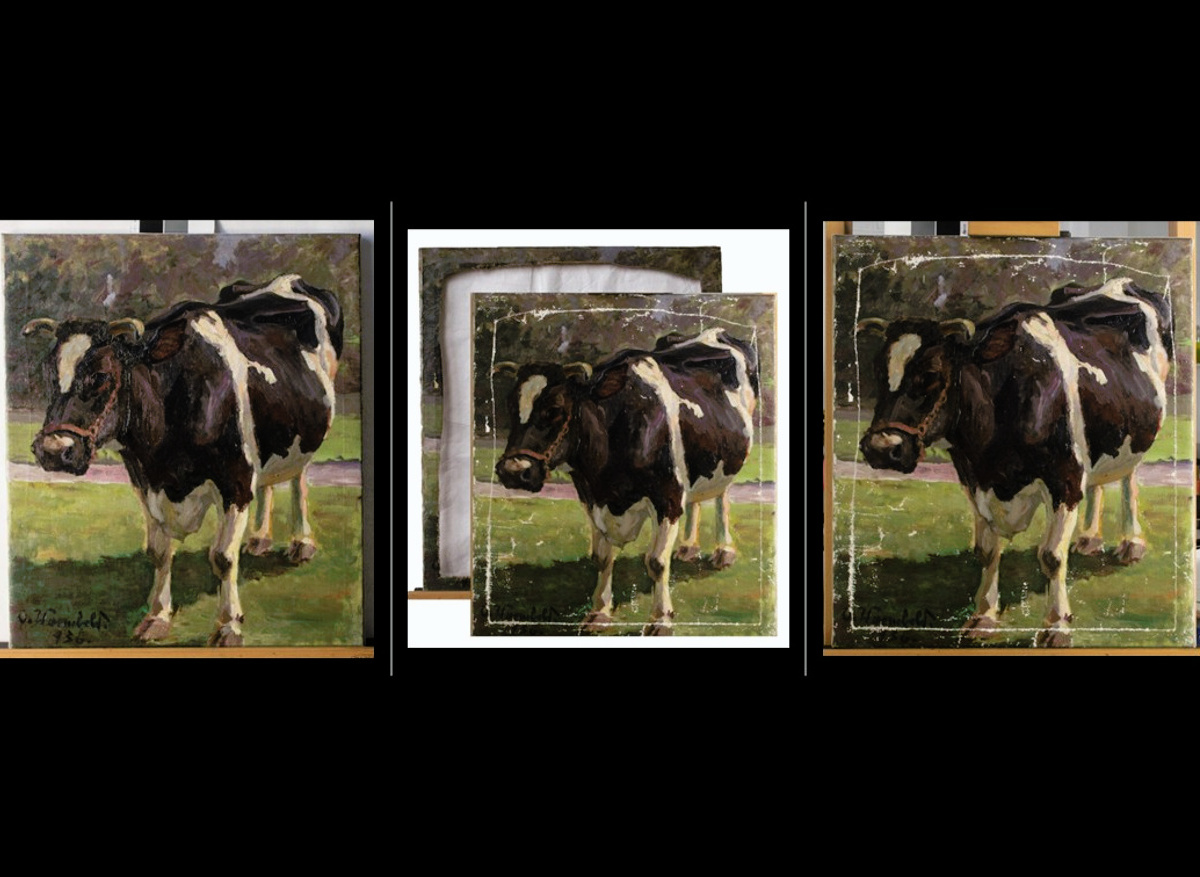I have been practising since 1996 after finishing training in Germany and have a broad range of experience, gained in the museum environment as well as in private practise. My expertise covers paintings of all periods and techniques, painted sculpture, frames and contemporary art.
Thanks to securing a number of very rewarding project employments during my earlier career, I have gained invaluable experience working in Germany, Britain and the Netherlands. Each year however, I spent the summer holidays travelling the Western Highlands of Scotland, falling in love with country and people.
I am delighted that finally relocating to Scotland in 2005 to help preparing some of the Old Master paintings now on display at Kelvingrove Art Gallery, has enabled me to keep doing the work I am specialised in and enjoy very much, whilst living where I really want to be.
Training
1990 - 1993 - Apprenticeship: conservation of mural paintings at private conservation studiuo in Germany
1993 - 1994 - Apprenticeship: conservation of easel paintings and painted sculptures at private conservation srudio in Germany
1994 - 1998 - State Academy of Fine Arts Stuttgart, Course of Study: Technology and Conservation of Easel Paintings and Painted Sculptures (graduated 1996, Masters equivalent)
Work History
2012 - 2014 - Glasgow Museums, Project Paintings Conservator, 500 Years of Italian Art
2010 - 2012 - National Trust for Scotland, Project Conservator, Robert Burns Birthplace Museum
2008 - 2010 - Glasgow Museums, Project Paintimngs Conservator, Museum of Transport Decant/Riverside Project
2007 - 2008 - Glasgow Museums, Project Paintings Conservator, Old Masters/Kelvingrove Refurbishment Project
1998 - 2007 - Sylvia Krauss freelance paintings conservator in Stuttgart, Germany 2002 – 2005; Paintings Conservator at Stichting Kollektief Restauratieatelier Amsterdam, Netherlands 2000 – 2002; Paintings conservator at Lamport Hall Preservation Trust (Hamilton Kerr Institut Internship), Northamptonshire 1999; Project Paintings Conservator at Staatliche Museen Kassel, Schloß Wilhelmshöhe, Germany 1998; Assistant Paintings Conservator at Alte Pinakothek, Doerner Institut, Munich Germany 1996 – 1997



